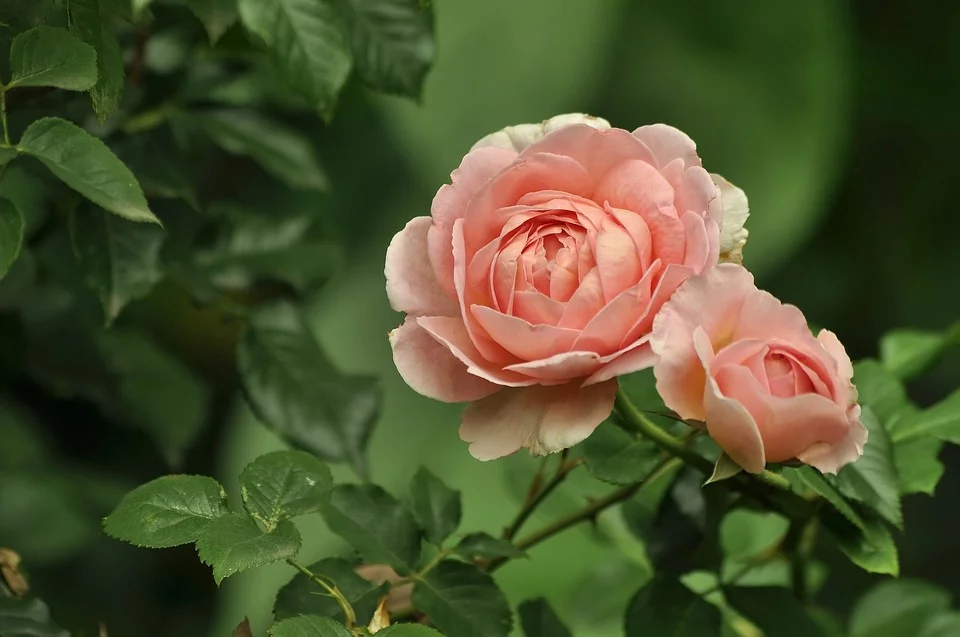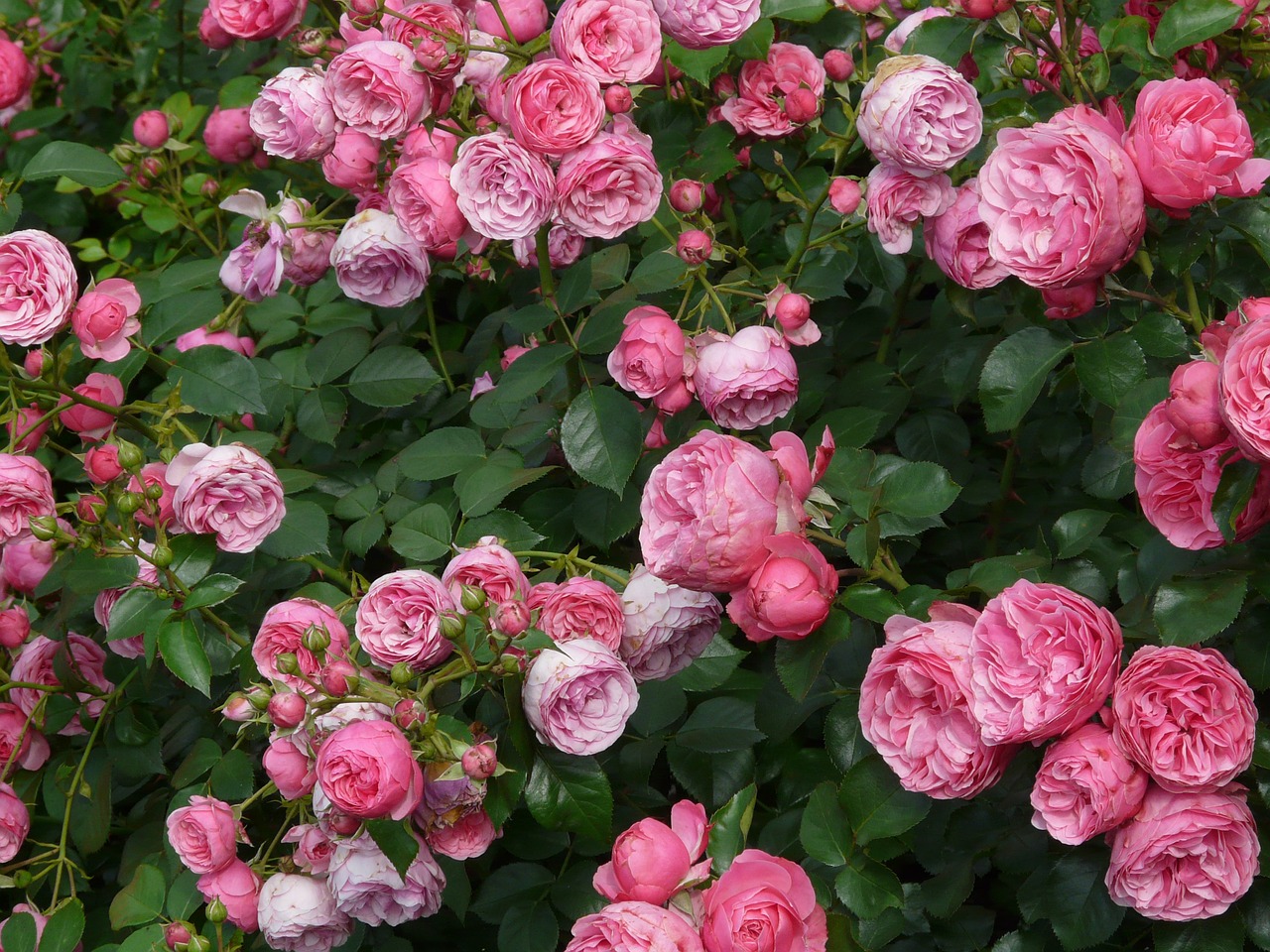We use affiliate links to run our site. When you buy through links on our site, we may earn an affiliate commission, without any added cost to you. Learn more
Rose is one of my favorite flowers, and many of you might also agree with me. But if you are one of those gardeners who have still not been able to figure out how to grow roses, I will share some useful rose gardening tips that will definitely be helpful.
Well, as per the expert roses are one of the most resilient plants you can put into landscaping. This article will put some of the techniques in terms of choosing the right variety, planting, and taking care which will definitely increase your success rate.
Ideal Rose Gardening Environment
Ideal pH Range For Roses:
The pH range ideal for roses is between 5.5 to 7. In case the soil is more acidic you can add limestone to bring it to this level. On the other hand, If the pH level of the soil is less acidic try mixing peat moss or compost to bring it down to that level.
Where to Plant Your Roses:
Roses need a minimum of 5 to 6 hours of direct sunlight. So plant them accordingly. Lack of sunlight will weaken your plant.
The morning sun is especially important for your roses. Be sure they are not devoid of it. If the shade is unavoidable, be it in the afternoon. Sunlight received in the morning helps dry the leaves that are wet the whole night. Early sunlight will also reduce fungal activities.
If you live near the equator or other warm areas protect your plants from scorching sunlight by adding some afternoon shade. Whereas if you are an inhabitant of a colder climate, a full day of sun is ideal for your beautiful roses.
A good air movement is also very important to fight against foliar diseases.
Don’t plant rose bushes near shrubs, hedges, or other plants. They will block air movement and will also compete for sunlight, water, and plant nutrients.

Will Rose Grow in Shade?
Yes, you can raise roses in partial shade. Not all varieties will grow there but some shade-tolerant varieties won’t do very bad. Remember roses always prefer full sunlight.
If you have no other option but to grow them in partial shade, choose any of the following varieties.
- Polyantha.
- Hybrid musk
How to Choose The Right Type of Rose For Your Garden:
First thing first. Know your local climate and the native rose varieties. There are many varieties of roses available for planting. There are climbing roses to groundcovers, some may produce larger blooms while many are just a miniature type.
Choose the breed that suits your local climate the best. For this, you can check your local nurseries. Here are tips for choosing the best one for your garden:
- Select a good and healthy plant.
- Avoid plants that are very thin or cracked, broken or damaged.
- Bare Root plants should be dormant.
How to grow A Rose Plant:
There are many ways to grow a rose, but some methods are more effective than others.
One of the best ways to grow a rose plant is to start with a bare-root rose. This type of plant is easier to care for and typically produces healthier plants.
Another way is to purchase a potted plant from a nursery. Potted plants are typically already established and require less care than bare-root plants.
And last but not the least, you can grow roses from cuttings also.
Can You Grow A Rose Plant From Seeds?
Growing a rose plant from a seed is very challenging. The germination period varies from a few weeks to a few years. Though you can grow most species of roses from seeds, cultivars and hybrids do not follow this method.
Bare-root roses and potted roses are two of the best ways to grow a rose plant. You can buy them from your local nurseries or from online shops.
Growing roses from cuttings:
Roses can be grown from cuttings, which is a great way to propagate your favorite varieties. Choose a healthy stem with plenty of leaves and cut it just below a leaf node.
Strip off the lower leaves and dip the cut end in the rooting hormone. Then, plant the rose cutting in moistened potting mix and keep it warm and humid until new growth appears.
Best time to Plant Roses:
Spring is the perfect time for planting your roses, the weather is just perfect. Before planting bare root roses soak them for 8-12 hours in water and remove any diseased roots.
Prune the canes. Remove any thin or weak growth. The canes should not have more than 5 healthy buds.
How Deep Should Roses Be Planted?
At the time of transplanting you need to dig a hole (at about 15-18 inches wide). The size of the planting hole should be a little wider than the root ball of the plant. It will encourage outer root growth.
Add good-quality compost and other organic matter to the hole. Now add some water to your newly planted rose. Mound loose soil around the cane.
If you are planting container roses, you don’t need to mound the soil. In container roses, the root system is already developed.
Never crowd your rose plant. Use the height of the mature plant as a guide. Generally, ⅔ rd of the height is a standard gap between two plants.
You can buy roses either as bare root stock or container plants in local shops.
Do You Need To Fertilize Roses?
Yes, you need to fertilize roses. For a complex plant like roses, the usual water and sunlight won’t do much good. You have to give them a good amount of feeding.
What Is The Best Fertilizer For Roses?
All plants including roses need N-P-K for a boost to excellent health. Along with these roses also need magnesium, sulfur, copper, iron, and manganese for thriving.
Finding a good fertilizer for roses can be challenging. Most of the fertilizers available are either not effective or not organic. Here is one organic fertilizer for roses that solves the problem.
How Often To Fertilize Roses:
Generally, you need to fertilize roses twice a year.
The first time, when the plants start to leaf out. Generally, it is in the month of March or April.
And the second time when the plants start to bloom. Generally in the month of May or June.
For some varieties like Hybrid tea roses or Grandiflora roses you need to add the fertilizer for the third time, generally in the month of August.
How To Water Your Roses:
Your roses need plenty of water, more than 1 inch per week. So water regularly so that the plants don’t die out of thirst. Keep the soil evenly moist throughout the growing season.
Don’t sprinkle the water. If you sprinkle water it will stay in the outer soil only and will not reach the main root which is deep in the soil.
Deep watering is far better than many sprinkling watering. It will promote deeper and stronger roots. Sprinkling also causes fungal growth.
How To Care For Roses In Summer:
If you are confused about how to care for roses in summer, Apply water 1-2 times every week. Use mulch to prevent water loss, especially during summer. 2-4 inches of coarse organic mulch works great for the plant.
At the beginning of the summer season add some Epsom salt. This will boost the magnesium and sulfur needs of the plant.
Make sure that the water drains really well. Too wet soil can also be very harmful. Check the soil before watering, you should never over-water the plants. Only when you feel the soil is very dry you should water the plant.
Early morning is the best time for watering the roses.
I have discussed the techniques for properly watering a plant in this article. Read that for more clarification.
What to Grow With Rose:
Companion plants help grow other plants. So when you are growing roses it is also best to grow some of these plants with roses. These companion plants will help roses grow. Some of the best rose companion plants are:
- Garlic: Garlic not only helps roses from pests like aphids and other bugs, it also increases the fragrance of roses. Garlic is also a good snake repellent.
- Chives: Chives are easy to grow and they can easily harmonize with blooming roses.
- Parsley: the best part of growing parsley is, that it will attract many beneficial insects that will protect your rose from Aphids. Parsley also makes your roses smell better.
- Tomatoes: Tomatoes protect your roses from black spots.
- Lavender: Lavenders are the most popular plants to plant alongside roses. They attract bees and butterflies. So the roses won’t have to bother about pollination.
You can also plant Sage with roses. They are also good plants to grow with roses.
Prune Rose Bushes:
Pruning is very important for Roses. Cut out any dead branches and weak sub-branches. Make sure air can flow freely through the plant. It will also help the plant look much more aesthetically good than a crazy mess of branches.
Roses have thorns in them. So while pruning or any other activities wear good quality pruning gloves and eyeglasses to protect yourself.
Pruning always helps to bring back strength to the main branches of the plant.
Growing Roses In Containers:
In case you are growing roses in the container, fertilizing becomes very important. As the roots of the plant cannot reach further into the soil in search of food you need to provide them regularly.
But be aware of over-fertilizing. It causes the plants to yield lesser flowers sometimes root injury can actually kill the plant. One of the best options in this dilemma is to provide slow-releasing fertilizers.
Conclusion:
Starting a rose garden is easy and can be a fun project for the whole family. Follow these simple steps, and you will be well on your way to enjoying fresh roses right from your own backyard!
Amazon and the Amazon logo are trademarks of Amazon.com, Inc, or its affiliates.

When the pruning done?
Wonderful gardening. I really enjoy it. Thanks for your wonderful article here. It was interesting to read. my writing company of scholarship essay writing service is taking more students as their customer.
Thanks for sharing.
The reason why you never should spray water on roses is because it may lead to powdery mildew and blackspot.
Deep watering once a week is the ideal method to follow.
While fertilizing roses, ensure that it is low in nitrogen and high in phosphorus. Too much nitrogen would lead to excessive leafy growth but weaker canes which eventually would be bearing flowers.
A regime of preventive maintenance should also be followed to avoid fungal diseases. Spraying with Sulphur is extremely beneficial.